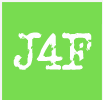Impacts of Panicum maximum Jacq. invasion and its manual weeding on the wood plant regeneration in the understory of a restoration site
DOI:
https://doi.org/10.5433/1679-0367.2012v33n1p97Keywords:
Canopy openness, Herb cover, Competition, Alien species, Ecological restoration.Abstract
Responsible for considerable annual losses of biodiversity in natural ecosystems, invasive alien species cause important conservation problems, leading native species to local extinction. This study examined the relationship among the coverage of Guinea-grass (Panicum maximum Jacq.), its manual weeding and the woody plant diversity of a restoration site. The site is a reforestation created using native species but due to spacing and species composition grass still dominates its understory more than 17 years after. Preliminary results showed that it is a barrier to the establishment of native species. In this study, we established 20 plots of 5m x 5m divided into two treatments, control and removal of P. maximum, to investigate the impact of manual weeding on the understory in a period of 90 days. Grass cover and canopy openness were also recorded. The grass cover had negative correlation with the abundance of plants, with the species richness and abundance of tree species. Canopy openness had a negative influence on the species richness, on abundance and richness of tree species, but not showed correlation with P. maximum. After grass removal, both abundance of seedling and species richness had no significant differences, so the manual weeding did not cause a negative impact in short time on the regeneration of the understory due to accidental native plant uprooting. However, a positive impact is expected only after a longer period of observation, after successive removals of invasive herbaceous and increased chance of colonization of the area by regenerating seedlings.Downloads
Downloads
Published
How to Cite
Issue
Section
License
Copyright (c) 2012 Semina: Ciências Biológicas e da Saúde

This work is licensed under a Creative Commons Attribution-NonCommercial 4.0 International License.
adopts the CC-BY-NC license for its publications, the copyright being held by the author, in cases of republication we recommend that authors indicate first publication in this journal.
This license allows you to copy and redistribute the material in any medium or format, remix, transform and develop the material, as long as it is not for commercial purposes. And due credit must be given to the creator.
The opinions expressed by the authors of the articles are their sole responsibility.
The magazine reserves the right to make normative, orthographic and grammatical changes to the originals in order to maintain the cultured standard of the language and the credibility of the vehicle. However, it will respect the writing style of the authors. Changes, corrections or suggestions of a conceptual nature will be sent to the authors when necessary.
This Journal is licensed with a license Creative Commons Assignment-NonCommercial 4.0 International.

















